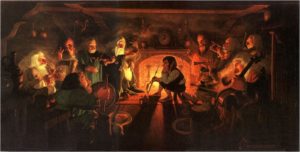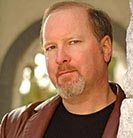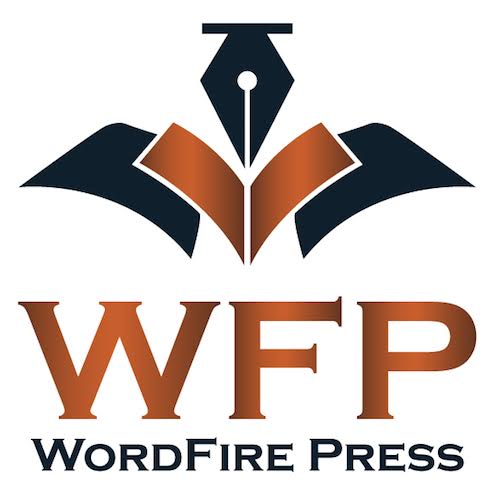For our readers in the United States, everyone at The Fictorians wish you and yours a happy Independence Day on this 4th of July.
Many beginning authors consider worldbuilding as a need to flesh out an entire planet or a continent. They spend countless hours focusing on where to place all of the individual buildings in a city and then coming up with a “cool” name for each area. I went through this phase in the 1970’s and 80’s when I wrote over three hundred Dungeons and Dragons modules for my friends to enjoy every other weekend. I have books filled with individual floor plans for all of the buildings in the capital city of Bali, including the furnishings and who lives and/or works there.
When it comes to worldbuilding for fiction, I prefer to come up with an overall skeleton structure for a particular culture and then let it develop naturally. There’s no need to have a detailed floorplan of the butcher shop next to the tavern unless there’s a reason for the characters to go inside and buy a porkchop. There’s no use in working out the personnel structure of the guards, the gentry, or the street sweepers unless the characters will be interacting with them. By developing the broad strokes as the need arises, it keeps me focused on what is needed for the story at that moment. It also keeps me writing instead of planning nifty things that only I will get to see in dusty old journals that get buried over the years.
If you think about the worlds that you’ve read over the years, there are some that will always stick out in your memory. I’ve found that those worlds do have plenty of broad worldbuilding for the setting, but it’s the little things that really make those worlds come alive in your head. A common example is The Hobbit. We’re set up with a quick explanation of what a hobbit is and that they live in a house built into the side of a hill — and not a nasty, slimy hole filled with the ends of worms and an oozing smell. Tolkien goes on to explain that hobbits love comfort, food, and drink.
 At this point we see Bilbo sitting outside smoking some pipe-weed. This is the kind of small detail that can transform a scene and make it rich and lively. He is enjoying his morning when Gandalf wanders by. Again, the small details about Gandalf’s background are sprinkled generously to immediately capture the attention of the reader, and it’s masterfully done. We want to know more about this wizard and the adventures he’s been on!
At this point we see Bilbo sitting outside smoking some pipe-weed. This is the kind of small detail that can transform a scene and make it rich and lively. He is enjoying his morning when Gandalf wanders by. Again, the small details about Gandalf’s background are sprinkled generously to immediately capture the attention of the reader, and it’s masterfully done. We want to know more about this wizard and the adventures he’s been on!
This is the classic setup for a novel, where the main character is shown enjoying his normal life in their normal world when something comes along and changes everything. This unbalance (usually) gets resolved over the story and the ending shows the protagonist getting used to their “new normal”.
 That beginning spot where Bilbo is puffing away and getting a bit annoyed at Gandalf for butting into his quiet morning, only to be dressed down after Gandalf reads Bilbo the riot act “as if Gandalf was selling buttons at his door”, shows a lot of subtle worldbuilding. We learn a bit more about the culture of the hobbits and, at least at first, that this particular hobbit starts off with a cheerful outlook. When the idea of adventures pop up in conversation we discover that hobbits like being predictable, and that there are no adventurers around Hobbiton. The droplets of culture are helping to build out the world of the Shire without being obtrusive. Instead of handing the reader a laundry list of boring and sometimes unnecessary information, Tolkien slips us small doses that we can consume without getting bored.
That beginning spot where Bilbo is puffing away and getting a bit annoyed at Gandalf for butting into his quiet morning, only to be dressed down after Gandalf reads Bilbo the riot act “as if Gandalf was selling buttons at his door”, shows a lot of subtle worldbuilding. We learn a bit more about the culture of the hobbits and, at least at first, that this particular hobbit starts off with a cheerful outlook. When the idea of adventures pop up in conversation we discover that hobbits like being predictable, and that there are no adventurers around Hobbiton. The droplets of culture are helping to build out the world of the Shire without being obtrusive. Instead of handing the reader a laundry list of boring and sometimes unnecessary information, Tolkien slips us small doses that we can consume without getting bored.
When it’s time to show us the world you’re imagining, consider allowing us to sip from your fountain pen instead of chucking us into a barrel of inky details. The buildup will help us see your vision one image or cultural display at a time.





 When I started my career with traditionally published novels, my editors and publicists encouraged me to make sure I mentioned the publisher whenever I talked in interviews and panels. I would promote my novels and proudly announce that it was “from Signet Books” or “from Bantam Books” or HarperCollins, or Warner, or Tor. I would print up my own postcards and bookmarks, sometimes even take out ads in publications. Once, I was roundly criticized for forgetting to put a publisher’s logo on the back of a postcard (that I paid for out of my own pocket).
When I started my career with traditionally published novels, my editors and publicists encouraged me to make sure I mentioned the publisher whenever I talked in interviews and panels. I would promote my novels and proudly announce that it was “from Signet Books” or “from Bantam Books” or HarperCollins, or Warner, or Tor. I would print up my own postcards and bookmarks, sometimes even take out ads in publications. Once, I was roundly criticized for forgetting to put a publisher’s logo on the back of a postcard (that I paid for out of my own pocket). d WordFire Press, it was merely an exercise to release the eBooks of my own out-of-print backlist, to which I had reacquired the rights. We had called our own company WordFire, Inc. for many years, so WordFire Press was the obvious name. We had no intention of building it into a much larger publishing company. Rebecca herself created our original WFP logo with a graphics program, and then other author friends of mine, seeing the success of our original releases, came to us with titles of their own, and our publishing company unintentionally expanded.
d WordFire Press, it was merely an exercise to release the eBooks of my own out-of-print backlist, to which I had reacquired the rights. We had called our own company WordFire, Inc. for many years, so WordFire Press was the obvious name. We had no intention of building it into a much larger publishing company. Rebecca herself created our original WFP logo with a graphics program, and then other author friends of mine, seeing the success of our original releases, came to us with titles of their own, and our publishing company unintentionally expanded. vamped our website, we also got a snazzy new logo. We built up our author and title list, and we started to get a little more attention through word of mouth. But the real thing that began to draw recognition as “WordFire Press” rather than “Some Publisher” was our monumental effort of exhibiting at numerous conventions, comic cons, and pop-culture shows around the country. We gave our authors a chance to meet fans face to face, hand-sell and autograph their books, an opportunity to be seen by thousands of potential readers in a day. In 2016 we did 22 shows with a total attendance of 1.5 Million people. (That was insane, and those operations are now run by Rabid Fanboy, so that I can concentrate on the publishing end and, more importantly, my own writing career.) But even under Rabid Fanboy, the “Bard’s Tower” gives ambitious WordFire authors the opportunity to have the “famous author experience.”
vamped our website, we also got a snazzy new logo. We built up our author and title list, and we started to get a little more attention through word of mouth. But the real thing that began to draw recognition as “WordFire Press” rather than “Some Publisher” was our monumental effort of exhibiting at numerous conventions, comic cons, and pop-culture shows around the country. We gave our authors a chance to meet fans face to face, hand-sell and autograph their books, an opportunity to be seen by thousands of potential readers in a day. In 2016 we did 22 shows with a total attendance of 1.5 Million people. (That was insane, and those operations are now run by Rabid Fanboy, so that I can concentrate on the publishing end and, more importantly, my own writing career.) But even under Rabid Fanboy, the “Bard’s Tower” gives ambitious WordFire authors the opportunity to have the “famous author experience.”